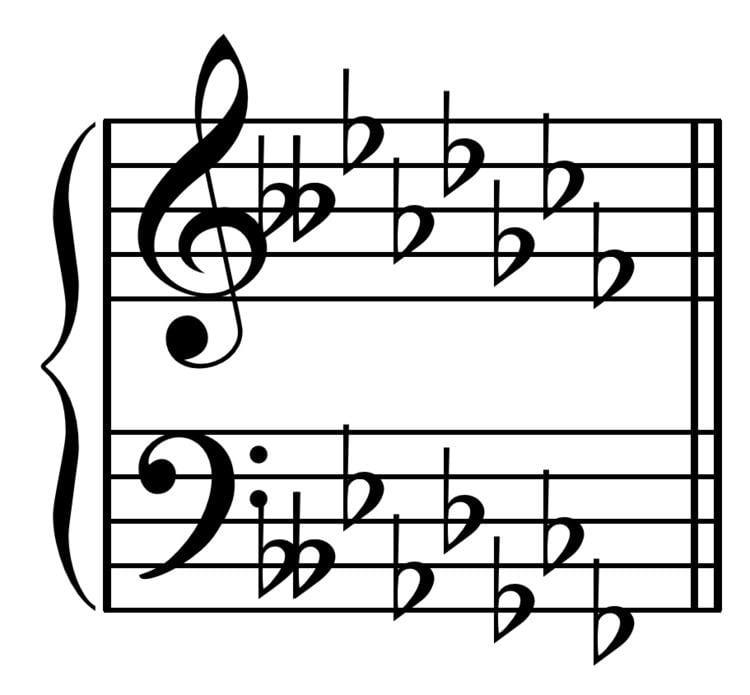Parallel key D♭ major | Enharmonic C♯ minor | |
 | ||
Relative key F♭ majorenharmonic: E major Dominant key A♭ minorenharmonic: G♯ minor Subdominant G♭ minorenharmonic: F♯ minor | ||
D-flat minor is a theoretical key based on the musical note D♭, consisting of the pitches D♭, E♭, F♭, G♭, A♭, B, C♭ and D♭. Play Its key signature has six flats and one double flat. The harmonic minor raises C♭ to C♮.
D♭ minor is usually notated as the enharmonic key of C♯ minor, as in the second and third measures of Amy Beach's Canticle of the Sun. However, two of Verdi's most well-known operas, La traviata and Rigoletto, unusually, both end very decisively in D♭ minor (although written with the five-flat key signature of the parallel major). Mahler's thematic motif "der kleine Appell" ("call to order") from his Fourth and Fifth Symphonies uses both notations: in his Symphony No. 4 (first movement) it is in D♭ minor, but in his Symphony No. 5 it is in C♯ minor. In the Adagio of his Symphony No. 9 a solo bassoon interpolation following the main theme appears first in D♭ minor, returning twice more notated in C♯ minor. Likewise, in the Adagio of Bruckner's Symphony No. 8, phrases that are tonally in D♭ minor are notated as C♯ minor.
